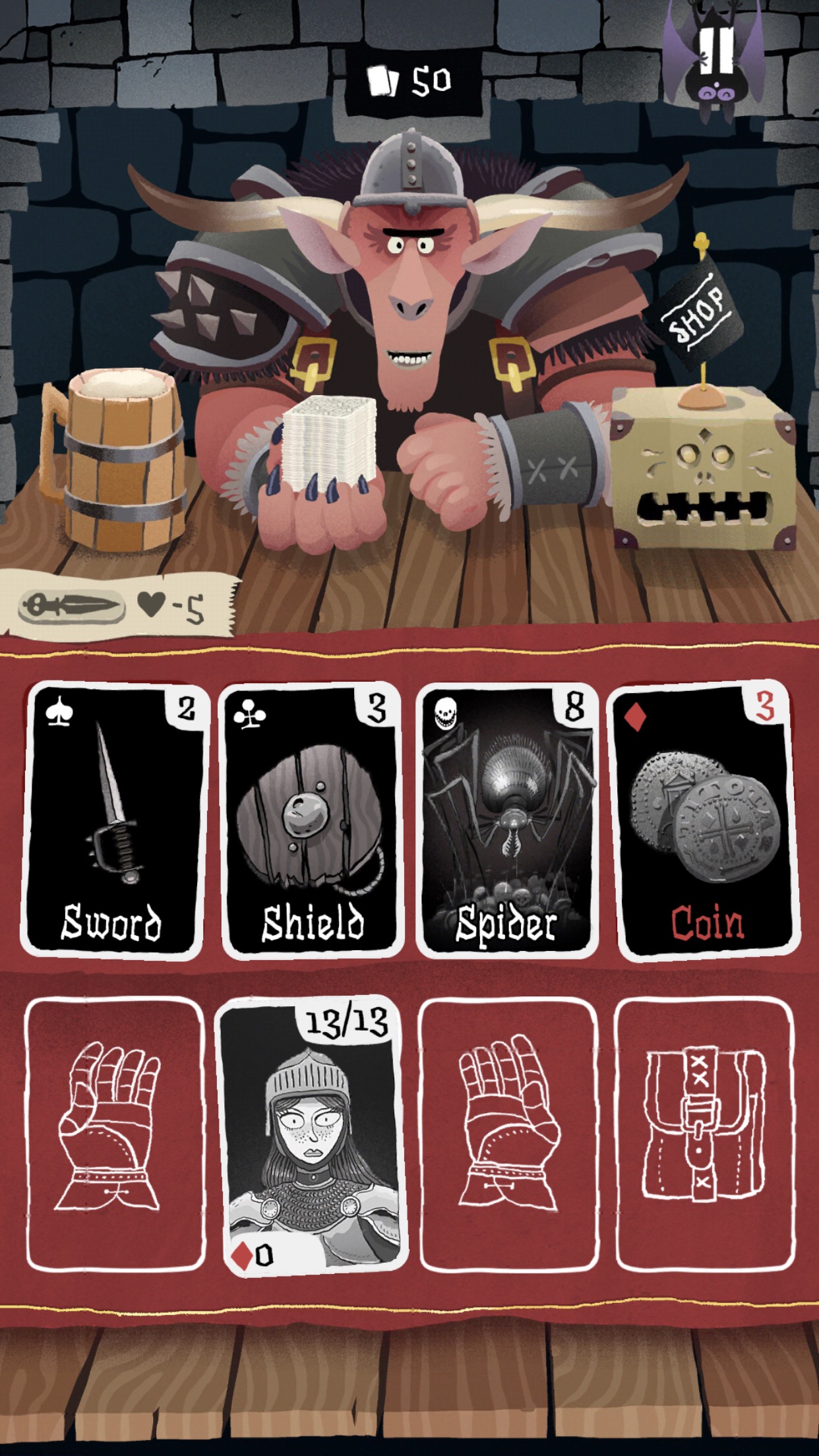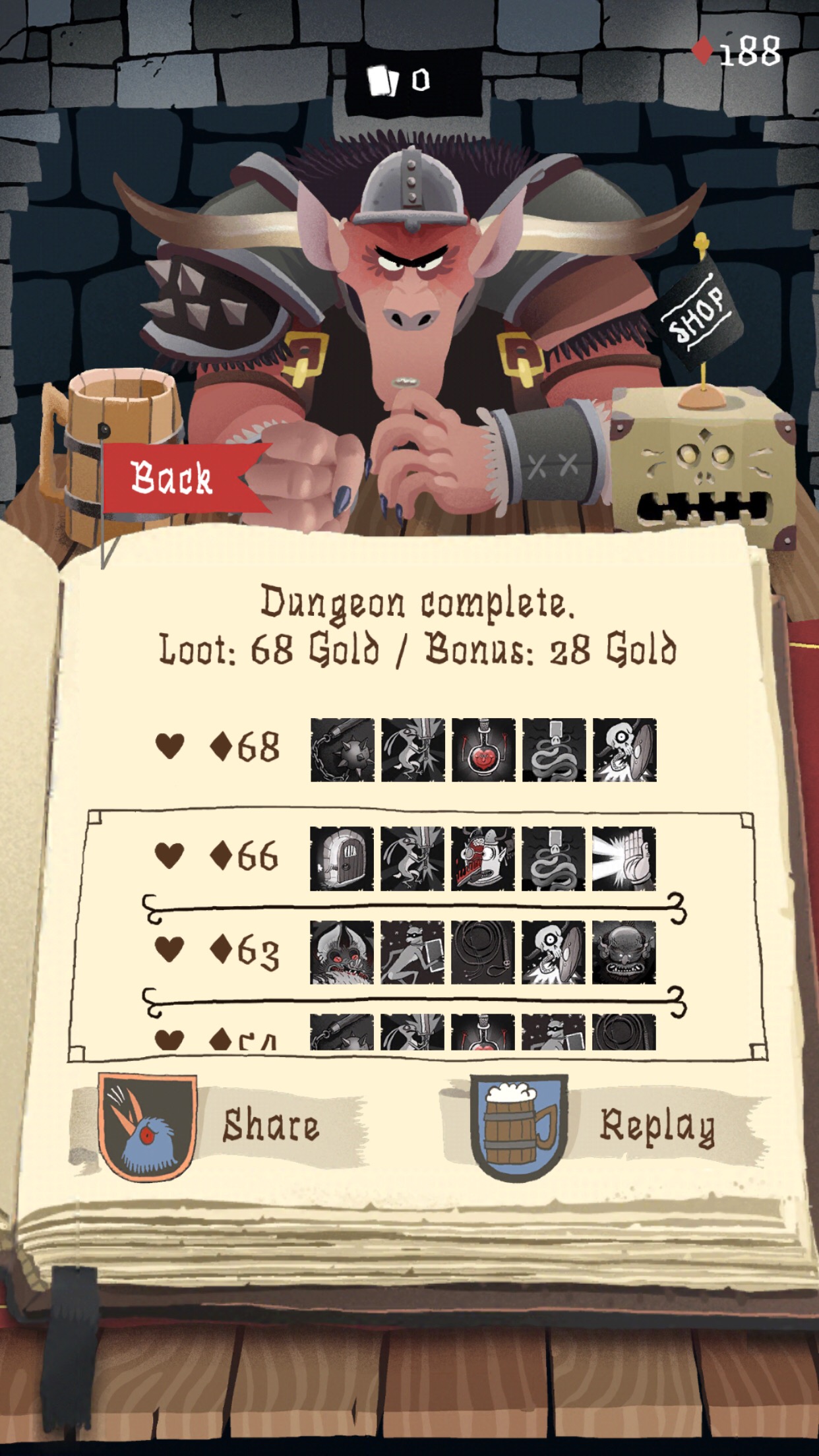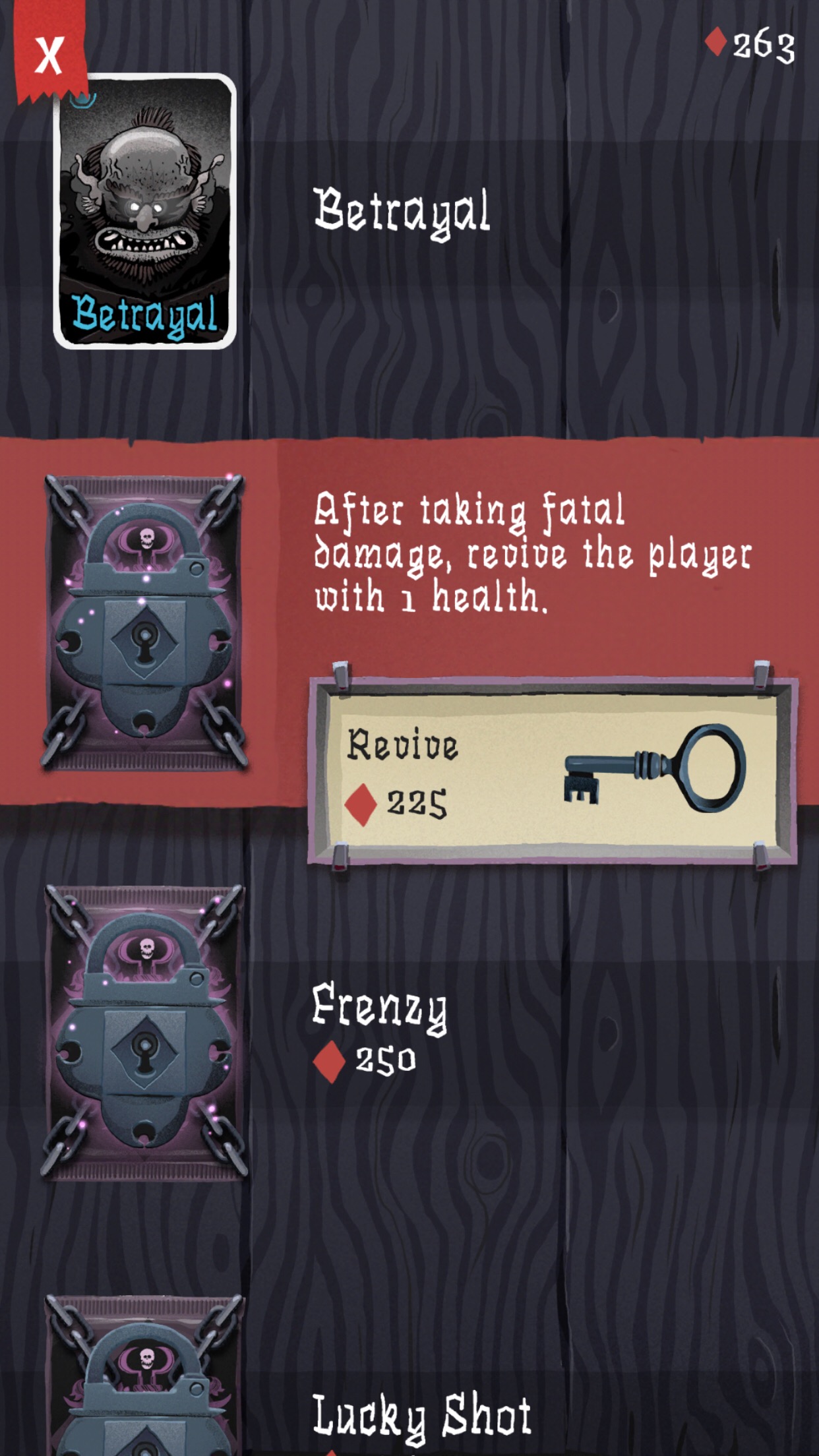 Hello, gentle readers, and welcome to the Classic Reload, the feature where we were told to deck some monsters and took it far too literally. Each month, we take a look at a game from the App Store’s past to see how it holds up in the here and now. It’s a chance to revisit old favorites, reflect on their position in the overall iOS library, or simply to take a deeper dive than our reviews typically allow for. As the trustworthy barkeep of this feature, I try to pick a balanced selection that reflects the diversity of the mobile gaming scene, but if there’s something you really want to see, don’t be shy. Simply comment below and let me know the games you would like to see and I’ll add them to the master list for future consideration.
Hello, gentle readers, and welcome to the Classic Reload, the feature where we were told to deck some monsters and took it far too literally. Each month, we take a look at a game from the App Store’s past to see how it holds up in the here and now. It’s a chance to revisit old favorites, reflect on their position in the overall iOS library, or simply to take a deeper dive than our reviews typically allow for. As the trustworthy barkeep of this feature, I try to pick a balanced selection that reflects the diversity of the mobile gaming scene, but if there’s something you really want to see, don’t be shy. Simply comment below and let me know the games you would like to see and I’ll add them to the master list for future consideration.
 Diligent readers might note that we already had a Classic Reload this month. Unfortunately, the same tight schedule that had me scrambling last week has continued on a little longer, so I had to once again deviate from my planned schedule and go for something spontaneous. Since I’ve been wanting to talk about Card Crawl (Free) for a while and its follow-up Card Thief (Free) just came out, I thought it would make a good candidate in spite of the fact that it’s only a couple of years old. If you haven’t played either game, you might think that Card Thief is a direct sequel that replaces the previous effort, but they’re actually two very different games with a similar aesthetic. As such, I think Card Crawl is still a highly relevant game, and one that you’ll want to look into if you enjoy what Card Thief puts on the proverbial table.
Diligent readers might note that we already had a Classic Reload this month. Unfortunately, the same tight schedule that had me scrambling last week has continued on a little longer, so I had to once again deviate from my planned schedule and go for something spontaneous. Since I’ve been wanting to talk about Card Crawl (Free) for a while and its follow-up Card Thief (Free) just came out, I thought it would make a good candidate in spite of the fact that it’s only a couple of years old. If you haven’t played either game, you might think that Card Thief is a direct sequel that replaces the previous effort, but they’re actually two very different games with a similar aesthetic. As such, I think Card Crawl is still a highly relevant game, and one that you’ll want to look into if you enjoy what Card Thief puts on the proverbial table.
Card Crawl is perhaps the best-known game from developer Tinytouchtales, a Berlin-based indie developer composed of Arnold Rauers and several other frequent collaborators. Founded in 2012, the developer released their first game in early 2013. Titled Matchagon (Free), it’s a minimalistic puzzle game that has you matching pieces to clear them off a board. The developer followed that game up later in the year with Zuki’s Quest (Free), an off-beat puzzle platformer where every move counts. In 2014, Tinytouchtales released One Tap RPG (Free), an unusual mash-up of roguelite and pachinko. You can see a very clear progression in terms of production values and design across those three games. Matchagon looks quite basic even for a minimalistic game, and its rules aren’t that far off of some other puzzle games. By the time we get to One Tap, the visuals demonstrate much more style and the gameplay is certainly more unique.
It wouldn’t have been surprising if Tinytouchtales had stuck with the retro pixel-art style used in One Tap RPG, but I think they took a wise read of the market and saw how hard it is for your game to stand out if you go that route. Whatever the reasoning might have truly been, the next game from the developer went in a whole other direction with its presentation. Card Crawl opts for a clean look that nevertheless oozes with personality. The art comes courtesy of Max Fiedler (aka Mexer), who did a wonderful job both on the card illustrations and on bringing a little slice of a fantasy tavern to life. Upon the game’s release in late February of 2015, it earned praise from players and critics alike. It might not have been a smash hit, but it did quite well in the App Store rankings for at least a little while. Perhaps most importantly, it greatly expanded the profile of Tinytouchtales among mobile gaming communities.
 Card Crawl is a solitaire-style game where you have to survive through a full deck of 54 cards, dealt out one hand at a time. The deck contains plenty of monsters that will dish out far more damage than you can take if left unchecked. Your job is to use the rest of the cards in the deck to mitigate damage as much as possible while removing each monster from play. Those cards include swords, shields, potions, gold coins, and special ability cards. You’ll always see the same cards in each game, save for the special abilities, but you’ll have no idea what order you’ll be facing them in until they’re actually dealt. Every game turns out a little different from the last as a result, making Card Crawl a stunning example of getting a whole lot of mileage out of a relatively small amount of elements.
Card Crawl is a solitaire-style game where you have to survive through a full deck of 54 cards, dealt out one hand at a time. The deck contains plenty of monsters that will dish out far more damage than you can take if left unchecked. Your job is to use the rest of the cards in the deck to mitigate damage as much as possible while removing each monster from play. Those cards include swords, shields, potions, gold coins, and special ability cards. You’ll always see the same cards in each game, save for the special abilities, but you’ll have no idea what order you’ll be facing them in until they’re actually dealt. Every game turns out a little different from the last as a result, making Card Crawl a stunning example of getting a whole lot of mileage out of a relatively small amount of elements.
Each hand consists of four cards. You’ll need to remove three of them in some way or another before any further cards are dealt. Your character can hold three different cards at one time. If you put them in one of the two hand slots, you’ll be able to use them. If you put a card in the backpack slot, you can save it for a rainy day. In general, you’ll be dealing with monsters in one of three ways. First, if you have some sort of offensive card capable of doing damage greater than the number on their card, you can remove them that way. You can also take the blow from the monster, which will cause you to lose hit points equal to the number on the monster’s card, minus any defensive measures you might be holding. Finally, some ability cards allow you to shuffle the monster back into the deck. That isn’t really dealing with the monster so much as kicking it down the road for future-you to deal with, I’ll remind you. Certain abilities will allow you to do even more interesting things with monsters beyond these basic methods.
Sometimes, it’s not monsters that are keeping you from clearing your hand, however. Sometimes, there are just too many items. Helpfully, you can drag any item to a shop to exchange it for some gold coins. You can also discard ability cards and gold coin cards at no cost. Just be aware of the fact that every useful item you discard stacks the mathematical odds against your survival a little more. Since gold coins have no actual use during the card game itself, you might not see the value in tossing useful cards away unless you really have to, but that’s where the rest of the game comes in. Gold serves as both your score and one of your means of unlocking new ability cards. Once unlocked, those ability cards have a chance to be randomly shuffled into the deck in Normal mode, and will be available for selection in the Constructed mode.
 Card Crawl features quite a few unlockables, actually. In addition to the 35 ability cards, there are new characters and gameplay modes that will open up if you can meet certain requirements. While some people might not like that kind of set-up, I think it makes a lot of sense. It limits your options somewhat early on in the game, allowing you to get your bearings and learn essential strategies. At the same time, the unlocks come pretty frequently in the early stages, making you feel like you’re getting showered with rewards for coming back to the game again and again. By the time the unlocks have slowed to a trickle or stopped altogether, there’s so much to do in the game that you don’t really need a carrot to be lured back.
Card Crawl features quite a few unlockables, actually. In addition to the 35 ability cards, there are new characters and gameplay modes that will open up if you can meet certain requirements. While some people might not like that kind of set-up, I think it makes a lot of sense. It limits your options somewhat early on in the game, allowing you to get your bearings and learn essential strategies. At the same time, the unlocks come pretty frequently in the early stages, making you feel like you’re getting showered with rewards for coming back to the game again and again. By the time the unlocks have slowed to a trickle or stopped altogether, there’s so much to do in the game that you don’t really need a carrot to be lured back.
As ability cards are the only real variable beyond how the deck is shuffled, it’s always exciting to get a new one. Each round, five ability cards will be included in the deck. In Normal mode, that selection will be random. Constructed mode only differs from Normal in that it allows you to choose which five ability cards will be shuffled into the deck, which can make things a bit easier. Scores are tracked separately for each mode, and your score always shows which five ability cards you had for that particular round. Each ability introduces new strategies to consider, and some of these cards naturally go better with others. In another show of thoughtful design, many of the early ability card unlocks will help you survive, while later unlocks help you earn more gold. This is a game that knows where its players are likely to find their long-term satisfaction. It even throws in a Daily Dungeon for easy-to-access competition with other players.
The ultimate mode to unlock is the Delve mode, and this is where the rules change a little. Each round, the deck gets more and more stacked with dangerous monsters, and your goal is to try to survive long enough to earn a specific amount of gold. This mode was added to the game nearly a full year after its original release, giving players a reason to come back to the game if they had felt they had already mastered its ins and outs. You have to unlock every ability card before you can even try this mode, which is about as big of an experts-only sign as a game can probably muster.
 While I have great appreciation for the way the game unfurls through its unlockables, it’s the core mechanics themselves that make Card Crawl one to come back to again and again. This is a game that would probably work just fine as a real physical card game with a standard-sized deck, yet it packs in much of the suspense, resource management, and strategic thinking of far more complex works. You might get a full of hand of terrifying monsters on your first turn, or they might all end up stuck at the back of the deck. You don’t know when the good or bad surprises will come up, so you have to constantly hedge your bets. You’ll win plenty if you play it safe, but if you really want to get a high score, you have no choice but to take some tremendous risks. Should you sell your potion now? Will there be another potion in the next four cards, or will there be two Souleaters ready to make you regret your brash move?
While I have great appreciation for the way the game unfurls through its unlockables, it’s the core mechanics themselves that make Card Crawl one to come back to again and again. This is a game that would probably work just fine as a real physical card game with a standard-sized deck, yet it packs in much of the suspense, resource management, and strategic thinking of far more complex works. You might get a full of hand of terrifying monsters on your first turn, or they might all end up stuck at the back of the deck. You don’t know when the good or bad surprises will come up, so you have to constantly hedge your bets. You’ll win plenty if you play it safe, but if you really want to get a high score, you have no choice but to take some tremendous risks. Should you sell your potion now? Will there be another potion in the next four cards, or will there be two Souleaters ready to make you regret your brash move?
This random element might turn some off, and I know our own Carter Dotson was a bit suspicious of it when he wrote his review, but I think it gets to the very core of what makes Card Crawl work. While it’s certainly conceivable that you could end up with an unwinnable situation, it’s extremely unlikely. But you absolutely do need to count the cards and be aware of what could potentially come your way. Since the monsters in the deck never change in most modes, you know just how many more tough beasts you have to contend with before reaching the end. You can make a strategy around that knowledge, but it has to be one that’s flexible enough to deal with the random elements. Card Crawl‘s magic is in the juggling act of keeping track of what has or hasn’t been played, hoping a good ability card comes your way, praying you’ve covered your hindquarters well enough to deal with the bad cards you’re dealt, all while trying to push your score as far as it can go.
Card Crawl has been well-maintained since its release, receiving near-monthly updates to add new features and address bugs and compatibility issues. It’s safe to say this game will be up and running for a long time to come, I think. While I imagine Tinytouchtales is going to be focusing on Card Thief at least for the next little while, I have full faith that this developer will take care of its other games to make sure that everyone can still play them as time goes on. I know I certainly want this game to be on my phone for the foreseeable future. It’s deep yet accessible, and random enough to surprise while being predictable enough to encourage building strategies. Games like that just don’t come around every day.
That’s just my take on Card Crawl, though. What do you all think? You can share your thoughts in the comments below, good or bad. As a reminder, there’s just one week left in our March RPG Reload Play-Along of Lunar. I’d think that it’s probably too late to get started, but there’s nothing saying you actually have to finish the game before the end of the month or anything, so why not stop by the thread? We’ll be announcing the next month’s Play-Along in next week’s RPG Reload, so make sure you check it out. As for me, I’ll be back next week with more Reload fun. Thanks for reading!
